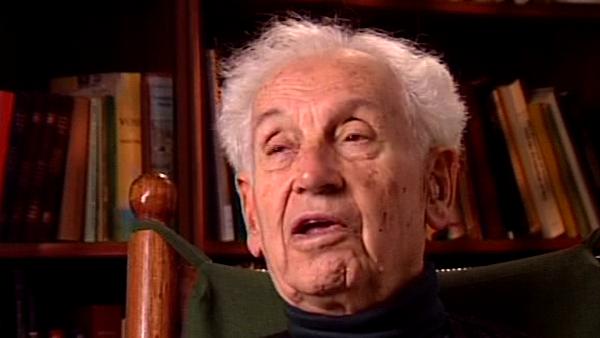NEXT STORY

The American Ornithologists' Union
RELATED STORIES

NEXT STORY

The American Ornithologists' Union
RELATED STORIES


|
Views | Duration | |
|---|---|---|---|
| 51. Development of the Sanford Hall of Birds | 129 | 03:07 | |
| 52. Invitation to become visiting professor at the University of... | 126 | 03:28 | |
| 53. Preparing and marking exams | 212 | 02:08 | |
| 54. Opposing views on evolution | 230 | 01:58 | |
| 55. The stay in Seattle | 145 | 00:54 | |
| 56. Getting a professorship at Harvard | 199 | 01:48 | |
| 57. Teaching ornithology | 157 | 04:15 | |
| 58. The Bronx County Bird Club | 154 | 01:13 | |
| 59. The Linnaean Society of New York | 123 | 02:29 | |
| 60. The American Ornithologists' Union | 140 | 03:08 |


It was a group of bird watchers and ornithologists who certainly needed guidance and needed some professional input. And so I became secretary and then later on took on the editorship and they brought out some very poor publications and I decided to improve the quality, and I… persuaded Margaret Morse Nice, who was doing, at that time, probably the best work, the best field work with birds in the United States and possibly in the whole world. I persuaded her to write up all of her work, and then I would publish it in the Transactions of the Linnean Society and so it was done. Now, she was not very good in… in her style and her calculations were usually wrong by a couple of percentage points and so forth, so I had to put in a lot of work, but finally this work came out and it was a great success and after a while it was sold out and had to be reprinted. It was reprinted by some commercial publisher, I believe, and it made her famous but there was quite a bit of grumbling among the members of the Linnaean Society [of New York] because it wasn't the kind of the publication that they would enjoy, but it certainly gave prestige. And then I got the Dutch behaviorist, Nikolaas Tinbergen to publish some of his observations in a… in a small publication of the Linnaean Society and it had, during the time I was editor, it had sort of a golden period, and then it sank back into… its sleepy existence after I had left. But at the same time it gave me experience as an editor, and the experience that I had gotten there helped me a great deal when I established a journal Evolution because I was… already by that time I knew how to deal with printers, how to do copy editing and all the important things of… of being an editor. So my… my apprenticeship as you may call it as editor of the Linnaean Society of New York was… was quite important for my life.
The late German-American biologist Ernst Mayr (1904-2005) was a leading light in the field of evolutionary biology, gaining a PhD at the age of 21. He was also a tropical explorer and ornithologist who undertook an expedition to New Guinea and collected several thousand bird skins. In 1931 he accepted a curatorial position at the American Museum of Natural History. During his time at the museum, aged 37, he published his seminal work 'Systematics and Origin of the Species' which integrated the theories of Darwin and Mendel and is considered one of his greatest works.
Title: The Linnaean Society of New York
Listeners: Walter J. Bock
Walter J. Bock is Professor of Evolutionary Biology at Columbia University. He received his B.Sc. from Cornell and his M.A. and Ph.D. from Harvard. His research lies in the areas of organismal and evolutionary biology, with a special emphasis on functional and evolutionary morphology of the skeleto-muscular system, specifically the feeding apparatus of birds.
Tags: United States of America, Transactions of the Linnean Society, Linnaean Society of New York, Margaret Morse Nice, Nikolaas Tinbergen
Duration: 2 minutes, 30 seconds
Date story recorded: October 1997
Date story went live: 24 January 2008